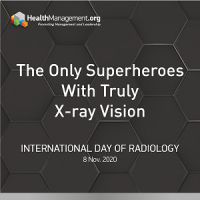Rapid diagnosis is critical for the efficient management of COVID-19 patients. This disease is new, theoretical knowledge is limited, as is clinical experience, and there is a shortage of evidence-based guidelines. All this has resulted in multiple opinions and recommendations for COVID-19 diagnosis. Many of these recommendations are based on early publications.
Real-time reverse transcription polymerase chain reaction (RT-PCR) has more or less become the reference test for COVID-19 diagnosis. However, because it has limited availability and is time-consuming, computed tomography (CT) imaging has been proposed as an alternate testing tool. CT is being used as a screening tool to rule out COVID-19 infection and as a diagnostic tool to confirm COVID-19 based on sensitivity, specificity and predictive values. However, these parameters depend on patient characteristics, imaging technique, and clinical experience and quality of subjective decision making of the doctors interpreting these images. Therefore, there is a risk that the diagnostic accuracy may vary and could also have an element of bias, such as incorporation bias and verification bias.
It is important to note that more than 11,000 papers have been published on COVID-19 since its outbreak. While this is a commendable effort, the time pressure and limited opportunity for peer review may affect the quality of these studies and increase the risk of bias and incomplete reporting.
During the COVID-19 pandemic, chest imaging techniques have been vigorously implemented for the screening and diagnosis of patients. A systematic review was performed to evaluate the literature on the diagnostic test accuracy of chest radiography (CXR), computed tomography (CT) and ultrasound for the diagnosis of COVID-19. The goal of the review was to search and synthesise the literature and to evaluate the extent of suboptimal reporting and bias. Thirteen studies were included in the review.
There has been significant discussion on the use of imaging to screen and diagnose COVID-19 patients. However, the review shows that only a few studies have addressed the diagnostic test accuracy of chest imaging. Findings show that the reported CT test accuracy for COVID-19 diagnosis varies quite significantly. Poor adherence to reporting guidelines and a high risk of bias, probably due to the need for urgent publication, was also observed. Specifically, recalculated CT sensitivity and specificity in suspected COVID-19 in diagnostic test accuracy studies ranges were 0.57-0.97 and 0.37-0.94, respectively. There was low adherence to reporting guidelines, with only 35% of items being reported. A high risk of bias was identified in 10 out of the 13 studies.
These results are not surprising because most of these studies have been conducted, written and published within a very short span of time and under immense pressure and stressful conditions. However, the fact that there is so much variability and that there is also a risk of bias carries significant implications for COVID-19 patients and healthcare systems. The findings show very low certainty of evidence for both sensitivity and specificity estimates of CT for COVID-19 diagnosis. Reported test accuracy varies substantially and is further complicated by poor adherence to reporting guidelines and a high risk of bias. There is a need to address this issue to and to improve the quality of results, reduce bias and improve adherence to reporting guidelines.
Source: Radiology: Cardiology thoracic imaging
Image Credit: iStock



























